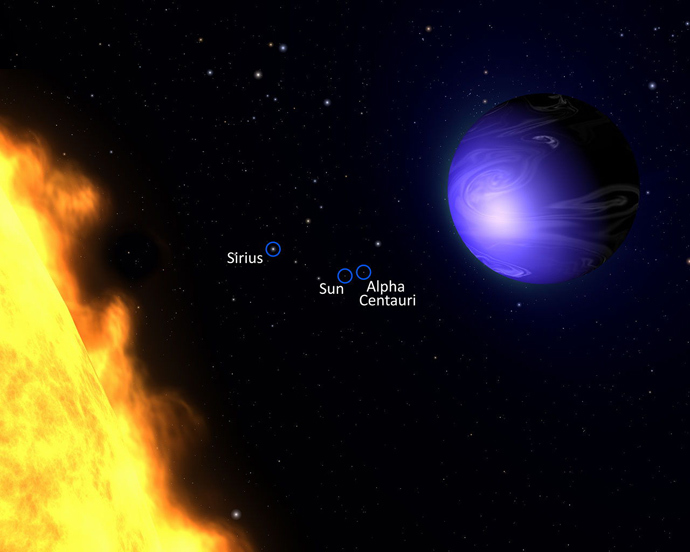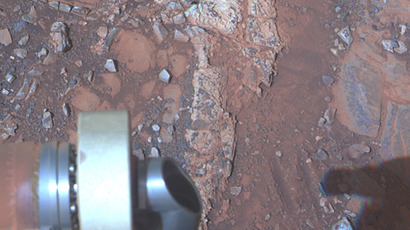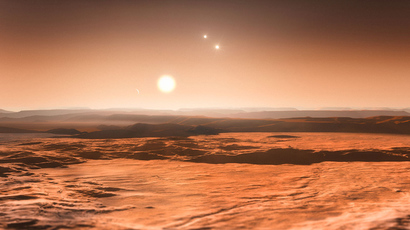Unearthly blue: Scientists reveal color of planet 63 light years away
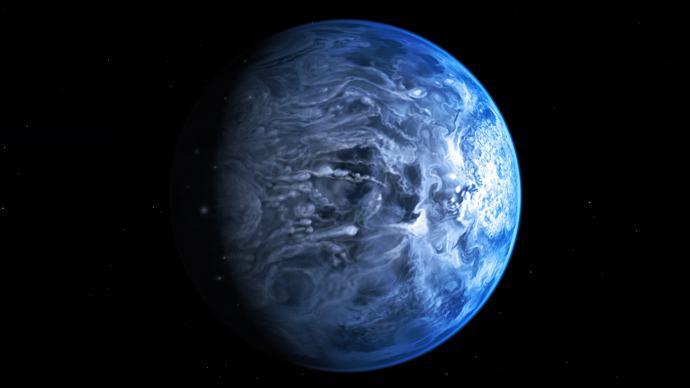
For the first time, astronomers have been able to determine the color of a planet outside the solar system, and it turns out that this planet is blue. It circles a star 63 light years away from Earth, and it rains melting glass there.
The planet is 13 percent bigger than Jupiter, and orbits very
close to its star, circling it once in 2.2 days.
The ‘deep blue’ planet belongs to the ‘hot Jupiter’ gas giant
planet type, but is much hotter than the largest planet in our
solar system: cloud temperatures are likely to measure almost
1,000 degrees Celsius (1,800 degrees Fahrenheit).
Winds sweep the planet at speeds of over 7,200kph (4,350mph).
"Measuring its color is a real first - we can actually imagine what this planet would look like if we were able to look at it directly," said Frederic Pont of the University of Exeter, who co-wrote the paper in The Astrophysical Journal Letters.
"As far as I am aware, nobody has had actual results on the color of an exoplanet," Pont said. "Now we can say that this planet is blue."
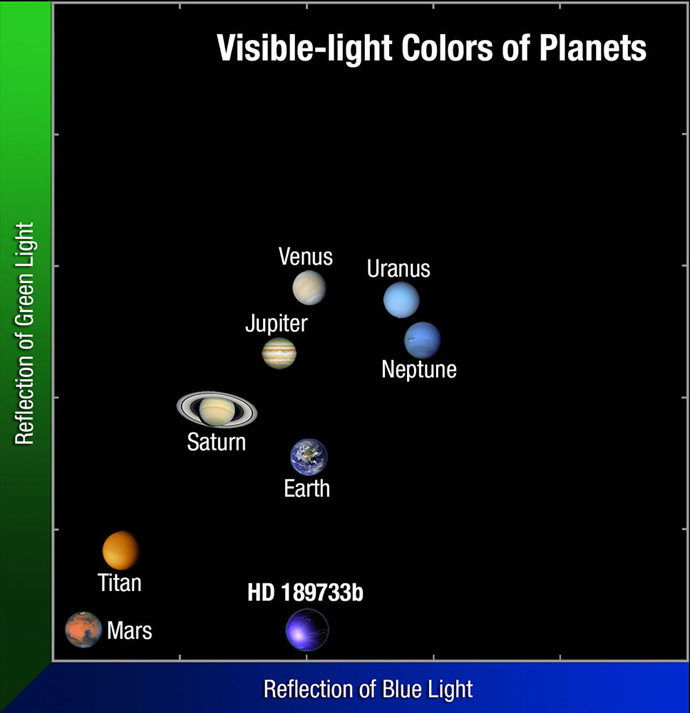
Its clouds are also blue, according to the data from the Hubble
telescope, used by an international team of astronomers. The
group observed the planet before, during and after it was
eclipsed by its star, which allowed them to subtract the light
from the star from the light reflected off the planet, giving
them a sense of its color.
"We saw the brightness of the whole system drop in the blue part of the spectrum when the planet passed behind its star," Evans says, in a statement. "From this, we can gather that the planet is blue, because the signal remained constant."
Astronomers suggest that the blue color comes from a hazy
atmosphere filled with small particles of glass – and it actually
rains melting glass on the planet.
The blue planet is situated 63 light years (around 600 trillion
km) from the Earth, and is called HD 189733b. It was discovered
in 2005.
The most recent findings on the planet’s color have been
published in the latest issue of the Astrophysical Journal
Letters.
The planet is only 2.9 million miles from its parent star, so
close that it is gravitationally locked, NASA says. One side
always faces the star and the other side is always dark.
By contrast, Mercury, the closest planet in our solar system to the sun, is 29 million miles away from the sun at its closest point of orbit.
